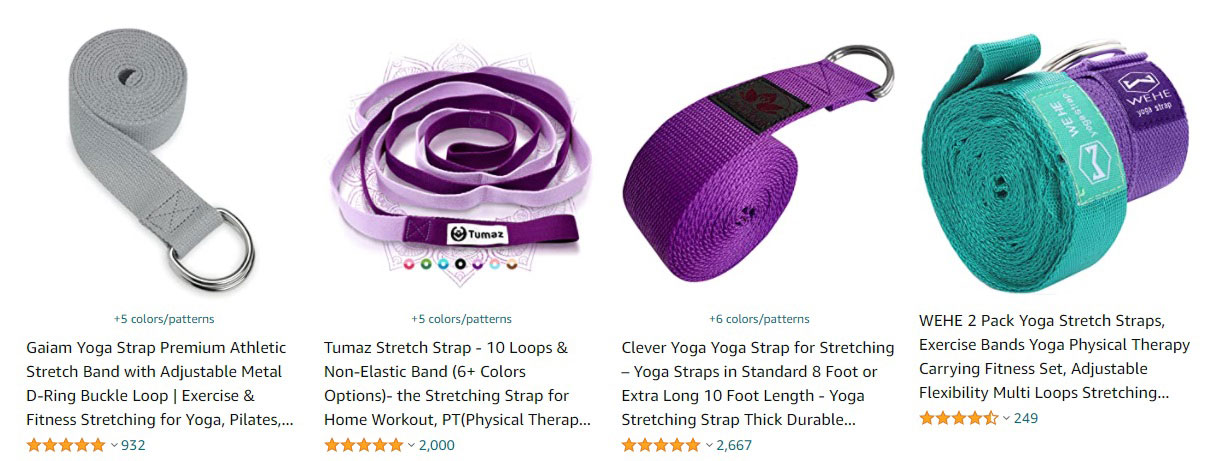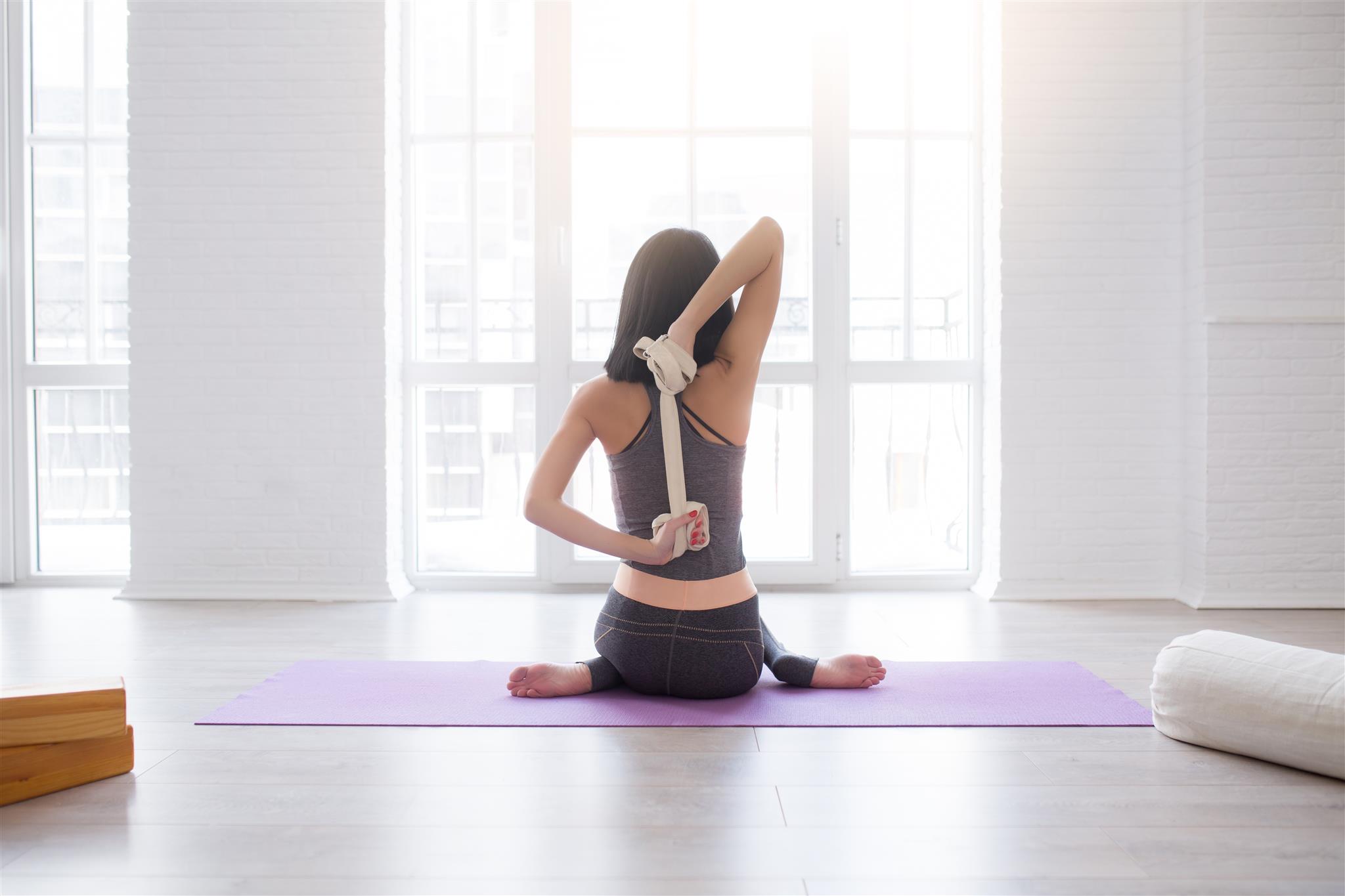How to use yoga strap
You are a beginner in the practice of yoga and you are not very flexible? Or do you want to perfect certain postures without hurting yourself? The yoga strap is made for you. It is an aid to flexibility while extending your arms without losing proper alignment. However, there are several models available and you don't know which one to buy. Don't panic! Choosing a yoga sling is very simple. Select the right size, the strongest buckle, an eco-friendly material but also a color that inspires you. Be careful, do not use a yoga mat strap because it is not adapted for asana practice and there is a risk that it will tear.
BUY A YOGA STRAP OF THE RIGHT SIZE ACCORDING TO YOUR MORPHOLOGY
First of all, you will choose a yoga strap according to its dimensions. Just like meditation cushions and bolsters, there are different sizes of yoga straps. The standard size is 2.50 m. However, if you measure more than 5 feet, choose a yoga accessory that is at least 10 feet long (model L). But what about the width? The thinnest strap measures 25 mm and the widest 40 mm. Choose its dimensions according to the yoga postures to be performed. We advise you, the strap from 2.50 m x 38 to 40 mm wide. It is the most known by yogis and also the most used.
A STURDY QUALITY YOGA STRAP BUCKLE TO WITHSTAND TENSION
What would a yoga strap be without a buckle? Whether it is rectangular or rounded, this finish is used to lock it at the length that suits you for the practice of your asanas. It is also more common to see metal buckles on the market, because they have the advantage of being very solid and do not break. However, there are also buckles made of reinforced plastic. We recommend the first option for a safer adjustable yoga strap.
CHOOSE AN ECOLOGICAL YOGA STRAP
Then comes the choice of material for your yoga accessory. Choose eco-friendly materials such as cotton or recycled yoga straps to be consistent with the practice of yoga. Beware of synthetic and non-ecological textiles that will burn your skin due to friction.
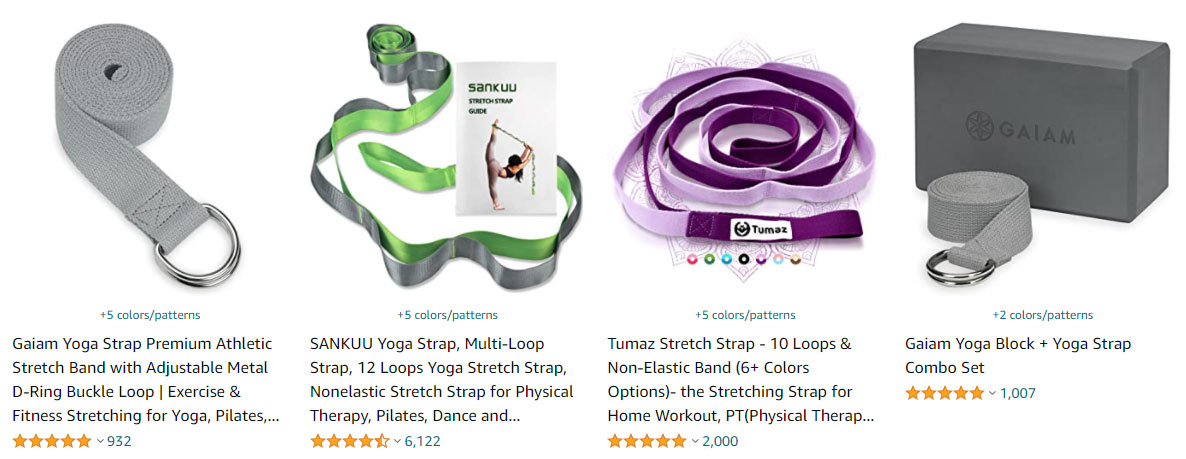
OPT FOR A YOGA STRAP IN AN INSPIRING COLOR
You may have noticed the different colors of yoga straps? Plain or printed, it's up to you to choose the one that inspires you. Did you know that each color has one or more virtues?
• Blue: promotes listening to others and inner peace (linked to the throat chakra),
• Green: encourages harmony, optimism, zenitude and balance (linked to the heart chakra),
• Black: helps to clear the mind,
• Violet: evokes serenity, idealism and purity (attached to the crown chakra),
• Orange: stimulates creativity and communication (linked to the sacred chakra),
• Red: gives inner strength (linked to the root chakra).

The yoga strap is an accessory that is often forgotten or intended to be used as a handful for your meditation mat. As easy as the yoga brick is to use, the strap remains quite mysterious. Yet it is a tool that can be found in the workouts of many athletes. One often has the impression that the strap is made to force, pull and stretch in the Soviet gymnastics mode... A tool of torture! This is obviously contrary to the principle of yoga where nothing should be done by force or by any constraint. So why use a strap during your yoga sessions?
What is a yoga strap used for?
Contrary to the image it may give, the strap is not a means of coercing your body. On the contrary, it is a tool to help you work smoothly. It allows you to hold postures without having to force your body, while respecting your body's proper posture. It can be used as an extension of the arms. This tool allows you to work your flexibility gently and without forcing. The strap is often used by beginners or people returning from injuries. Maybe it suffers from its spartan aspect, but in fact it is only soft and beneficial for the practice of your yoga, whatever its kind.
There are many ways to use the straps, as they fit easily into most asanas. Here are three postures where the strap will be particularly useful.
Utthita Hasta Padangusthasana with yoga strap
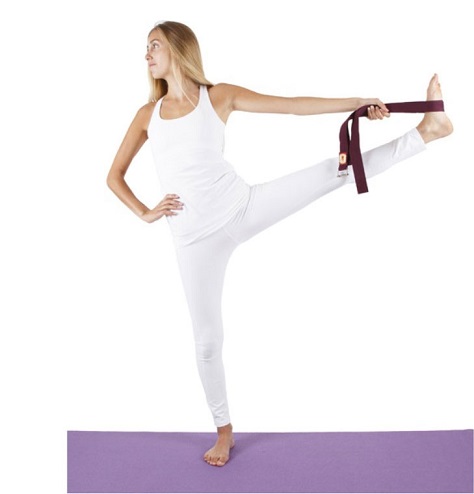
The asana Utthita Hasta Padangusthasana is better known under the poetic name of posture of the arm extended to the big toe. While standing, obviously with a straight back and a well aligned spine, the practitioner must hold his big toe with the leg straight and the arm outstretched. This is a difficult asana. One first learns how to do it on the ground. Flexibility is essential to succeed. A yoga strap will help to overcome the lack of flexibility to learn how to perform this posture perfectly. It is more useful to do the posture well with a strap than to do it badly without a yoga accessory.
To begin this posture on the ground: lie down and slide the strap under the soles of your feet. Then, stretch your leg and use the strap to help yourself stretch flexibly, but never force it. The strap will allow you to gain flexibility and to work gently on keeping this leg stretched. The ischios will be able to warm up and relax.
The other interesting aspect is that the strap will allow you to keep the good posture of the back which is very difficult to hold in this asana. Once your body will have understood it, the practitioner will be able to realize it standing upright using the strap to extend his arm.
Gomukhâsana with a yoga strap

Gomukhâsana or the posture of the cow's head is a classic of yoga. It is very useful and therefore very appreciated by yoga teachers, because it allows to work on the opening of the whole body: knees, ankles, hips, arms, back, bust... Part of this asana consists in joining the arms in the back at the level of the shoulder blades. It is a question of flexibility, but also of morphology. Some, even beginners, will simply succeed in it while others will have the impression of having to take contortion classes in order to prepare themselves. Fortunately, the yoga strap is there.
If your hands are not touching each other, it will allow you to connect and thus enjoy all the benefits of this posture with a successful stretching and without having to force. The yoga strap also helps to avoid injuries.
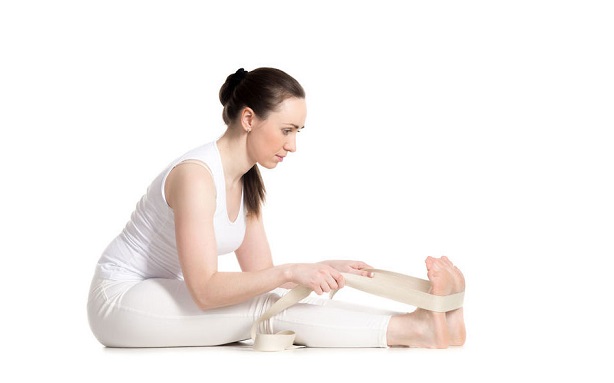
Paschimottasana with a yoga strap
Paschimottasana or pincer posture is at the same time a simple posture and very complicated when one lacks flexibility, especially in the back. It is even treacherous, because the practitioner will tend to force to touch this Grail, unexpected, which is the tip of the feet. The posture of the pliers can be really dangerous and a source of injury.
It is however relatively harmless. Sitting on your yoga mat, you have to stretch your legs and reach with your hands the tips of your toes. The more experienced you are, the more you will succeed in "closing" the clamp with the bust which will get as close as possible to the legs. The fundamental and almost spontaneous mistake is to focus on the legs when the most important thing in this posture is the correct posture of the back. The strap will serve to extend your arms while allowing you to hold the posture at the level of the alignment of the spine. This asana becomes accessible to everyone without forcing thanks to a simple yoga strap.
